I have used several Nikon D90 cameras at various times. In whatever conditions they were not: I constantly carried cameras with me in hikes, reinstalled lenses millions of times, in the rain, in the cold and on hot days - but the cameras worked like clockwork. Of course, I understand that good copies of Nikon D90 may have come across, but still, many years of trouble-free operation and mileage of over 130.000 (one hundred thirty thousand) of one copy and over 250.000 (a quarter of a million) of the second copy only gives rise to positive reviews.
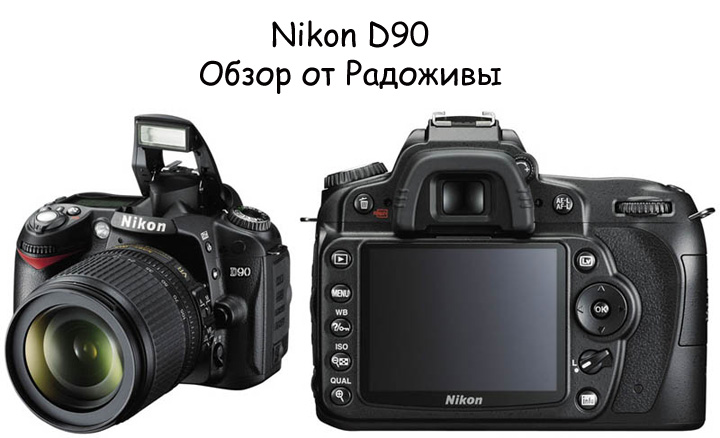
Review of the Nikon D90. View of the camera itself.
To fully understand and understand the camera, you just need read the instructionsIt’s long and boring, but I don’t see another way. The quality of the pictures very much depends on the lens and the methodology of your shooting, as well as image control mode, therefore, to say that the camera shoots better or worse is blasphemy, we can only talk about its ergonomics, technical characteristics and direct work experience. Always remember that important how to take pictures, but not by what means.
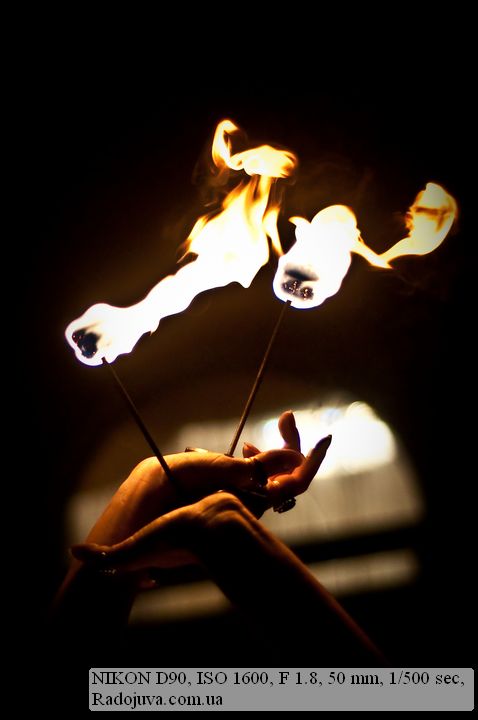
Sample photos on Nikon D90
And so, the camera belongs to the class of digital mirrors mid-range cameras... The Nikon D90 is often said to be an advanced amateur camera. Therefore, please note that this is not a professional camera, as they often write on the Internet (especially in online stores), professional cameras - is D300(s) D200, D700, D3(x, s), D4, D800(E) - therefore, you need to understand that the device is more aimed at amateurs than at professionals. The main feature of the camera is that the set of functions allows you to use the Nikon D90 just as well as professional technology, but with some limitations.
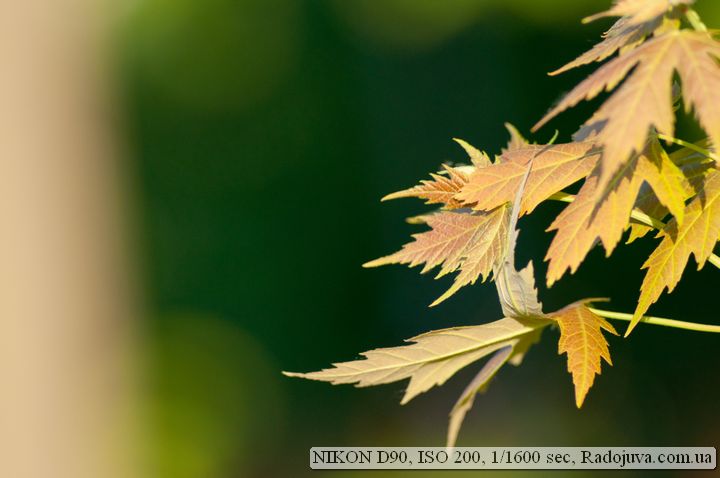
Sample photo on Nikon D90
The main parameters of Nikon D90, which are worth paying attention to
1. Live view
2. HD video 1280 * 720 24k \ s
3MP CMOS sensor
4. Aluminum-magnesium case with a bunch of buttons
5. Built-in autofocus drive
6. Additional screen
7. 4.5 frames \ second
8. Flash operating in Comand mode and FP mode
9. Lithium-ion battery
10. Matrix cleaning system
11. Bracketing exposure
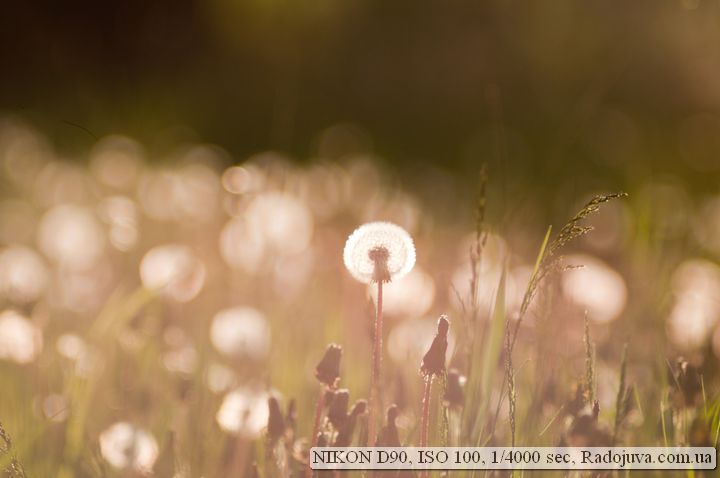
Example photo on Nikon D90
Now let's go through each item from a practical point of view.
1. Live View. Under live view it means “Live View” and in Nikon D90 it is quite a strong point.
First: made for the D90 very large screen (920.000 points - the same as in professional D3, D700) from which you can not tear yourself away. He even knows how to show slide shows to music!
Secondly: very convenient button to switch to live view - just clicked and the incomprehensible digital SLR turned into an ordinary soap box (useful for people who just switched to SLR cameras and just can't figure out what to see through the viewfinder).
Third: this mode allows clearly control focus at any point in your frame. Let’s take a closer look - when sighting you can select any area in the frame with the joystick and zoom it in on a scale of 1 to 1 - that is, select any point for focusing. This mode is indispensable when working with manual (non-autofocus lenses) and a tripod.
True, it takes time to get used to the work of the mirror, which adds unnecessary sounds and clinks when working. The mirror and shutter clicks when Live View is enabled, and when shooting, they click twice. It may seem that the camera is taking extra frames. A huge disadvantage of this mode is that autofocus works very, very slowly, and in video mode it does not work at all.
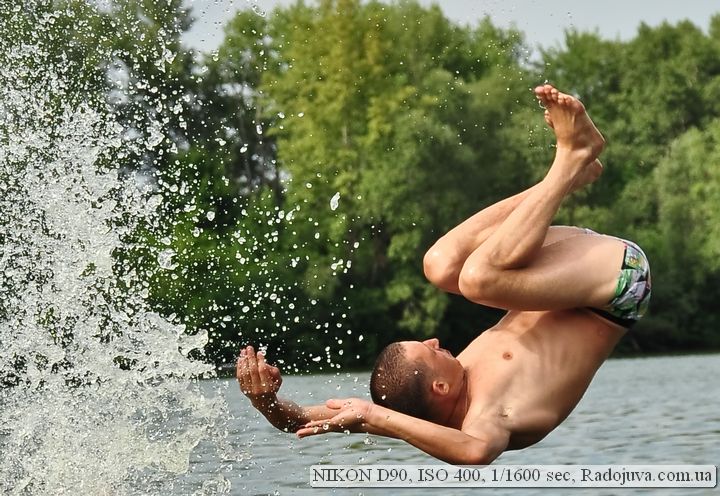
Photo on Nikon D90
2.HD video 1280 * 720 24k \ s without autofocus - absolutely unnecessary thing for a photographer
Why not necessary - because who will watch the video without autofocus? Okay, you can still take photos somehow in manual focus mode, but video with manual focus, when the scene changes at the speed of light, is a very difficult task. I recommend shooting video only with a tripod. A couple of times I shot a video with my hands - you can shoot, but again, it's very, very difficult. One more camera - Nikon D5000 - has video without autofocus.
The video itself is quite solid, in Motion JPEG format - which means that it “weighs” a lot. I advise you to immediately distill it into any of the popular formats after shooting - save a lot of disk space. Also, I advise you to block the exposure when shooting a video so that there are no tonal differences when changing the composition in the frame. Another serious problem with video is limiting the duration of the clip in 1280*720 up to 5 minutes. On the one hand, 5 minutes is quite enough to create short video selections, but I had to film my friend's performance once, and the 5 minute limit made the process very difficult. Also, after several 5-minute clips, the camera starts shooting clips up to 30 seconds long and turns off automatically, most likely due to the sensor overheating. The Nikon D90 is the first camera from Nikon with the ability to shoot video, so you shouldn't ask more of it. If you need a Nikon camera that shoots videos well and has automatic focus, then I advise you to look at the model Nikon D3100, Nikon D5100 и Nikon D7000.
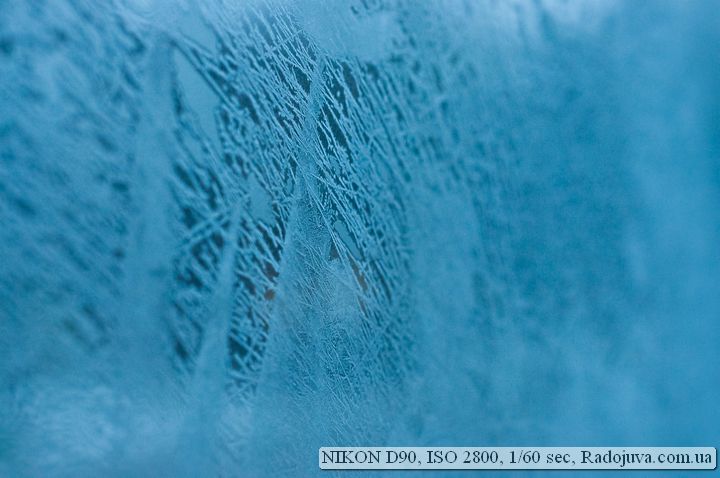
Photo on the Nikon D90. At high ISO.
3MP CMOS - just right
Why more? The more pixels - the higher the density and there may be more noise, due to the fact that the matrix cell is smaller and smaller - which means that it can catch less light. I advise you to read my article Battle of Megapixels.
The matrix is excellent. Of course, I already see noise at ISO 400, but at ISO 1600 they are still quite tolerant.
A very important point I noticed when working at high ISO, that the noise increases sharply after ISO 2500, that is, at ISO 2500 you can still squeeze something out, but then the quality of the photo drops dramatically. I recommend shooting at the proven ISO 200 and not raising ISO above 1600. ISO LO-1 (100) should be enabled only on a bright day, when you need to get some kind of portrait with an open aperture in order to keep within the shutter speed of 1 / 4000s. The values of ISO Hi1, Hi0.3, Hi0.7 are a kind of software wrapping of ISO, at such values it is practically impossible to get a low-noise picture.
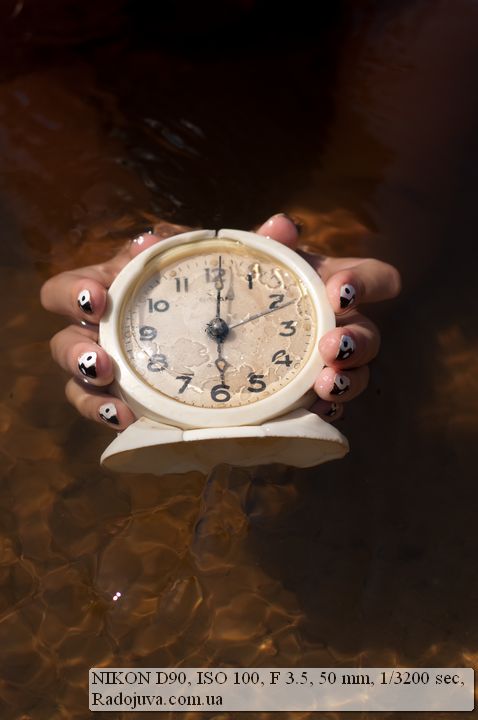
Sample photo on Nikon D90
4. Aluminum-magnesium housing (part)
In the introduction, I wrote that I constantly use, drag, ride with this camera and it feels quite adequately. Aluminum-magnesium alloy (although I did not find such information on the manufacturer’s website, but by weight, it’s not plastic) and one rubber insert, make the camera very practical, well-knocked down and provide excellent weight balance with different lenses. Perhaps for little hands it will be a little bit wrong, but for the serious hand of the photographer it’s just lovely.
On the body is a whole bunch of buttons. In the camera - the more the better. You can get quick access to all the basic functions and not scroll through the huge menu. I configured the programmable button to change the type of focus.
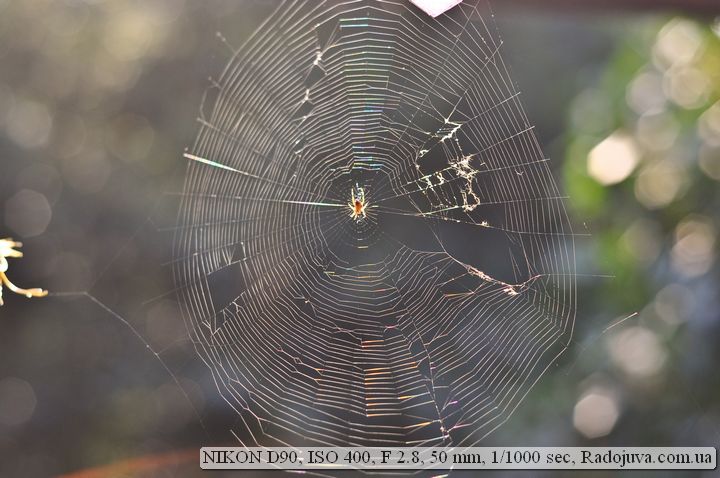
Wildlife Photo on Nikon D90
5. Built-in autofocus drive
A panacea for saving money and a panacea for professionals. The Nikon D90 camera has a built-in auto focus motor (screwdriver) for working with lenses marked AF. This allows you to use optics without a built-in focusing system (which means that you can use any autofocus lenses). Usually such optics are cheaper, for example, you can buy Nikon 50mm F1.8D AF for only $ 150 and feel like a real professional. Also, a huge portion of professional optics simply go without an auto focus motor. For example, there is simply no analogue for the Nikkor 135 DC with a built-in autofocus motor. More details about the compatibility of Nikon lenses in my article - Lens difference.
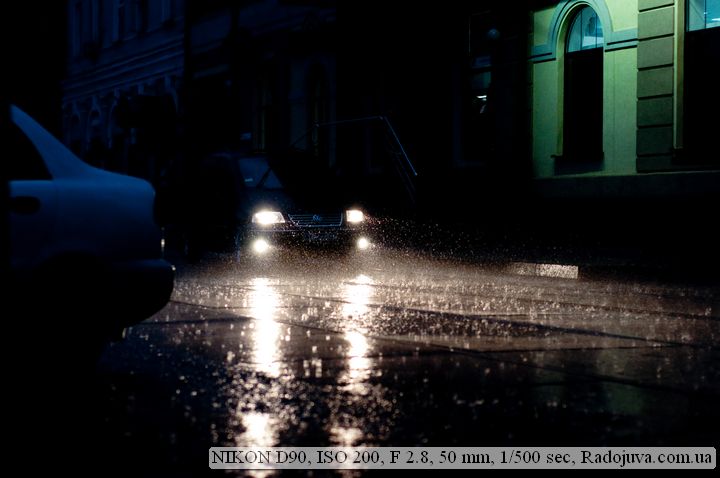
Photo on Nikon D90
6. Optional monochronous screen.
Recently I read on the Internet that the small monochrome display on the D90 is archaism, I was very surprised by this. In fact, it is not, the additional display is very good ergonomics and saves time, battery power, unnecessary movements. Let me explain - the display is always on top and you do not need to turn the camera upside down to look at the main display, secondly, it has a very high contrast in the sun (everything is visible), thirdly, it does not consume the battery (even the backlight mode of the additional screen uses a lot less charge than the main display). In general, the camera looks even more impressive with him. By the way - the backlight mode is turned on by turning the camera switch to the right. He himself then returns to its original position. Below is one of the most serious disadvantages associated with this lever.
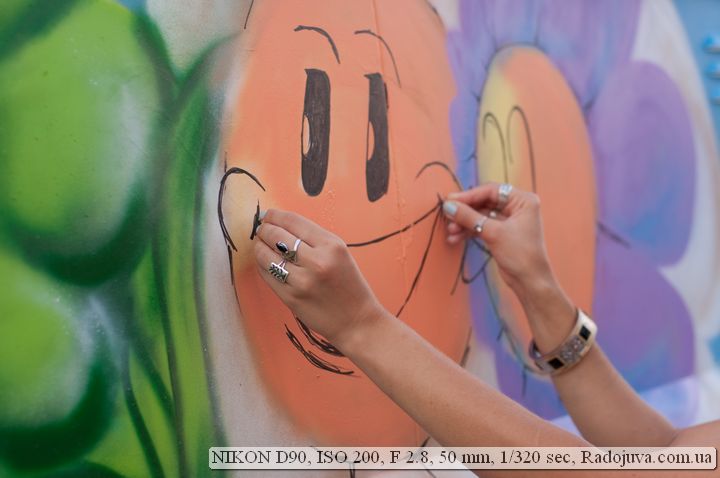
Photo on Nikon D90
7 - 4.5 frames / second
Someone can say, they say, stamps from Kenon are shot at 10 frames per second, the same D3 shoots 8 frames per second, but what can I say, D300 with a battery pack squeezes 8 frames per second. And now the question is - why do you need it? Burst shooting is very rare. 3 frames per second is already quite enough, the rest is only for specific tasks. Therefore, almost 5 frames per second is a pretty strong point. Conduct an experiment - at what speed can you press the camera button in the frame shooting mode? The same 5 times plus or minus will come out. In any case, the Nikon D90 has a higher rate of fire than the new, very expensive professional Nikon D800which can shoot at speeds up to 4 fps.
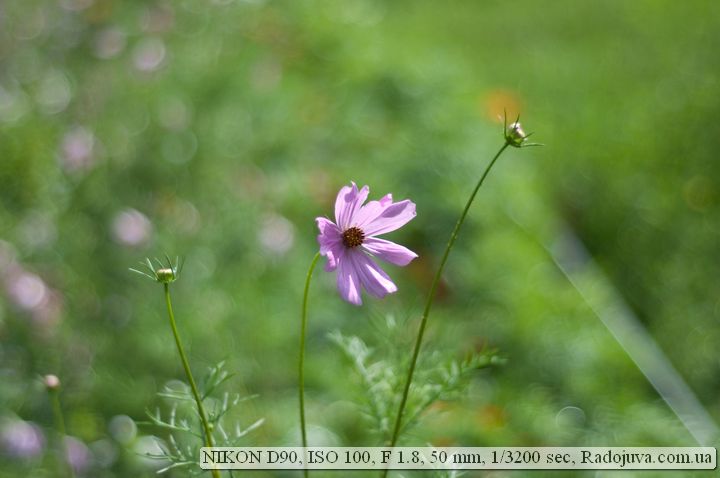
Sample photo on Nikon D90
8. Comand mode flash and FP support
Classics from Nikon. No need to buy expensive flash units or synchronizers - just go to the bracketing \ flash menu and select flash control mode C. Set the channel and group and control external flash units, such as SB-600, SB-700, SB-900, SB-800 и SB-910. Also do not forget that you can configure the built-in flash so that it gives only commands and does not take part in the shooting itself.
Then the most interesting - quick sync mode... With external flashes, you can set any shutter speed, up to 1/4000. Those who have not encountered such a problem will not understand; who knows, they will be glad. Few cameras support this mode. Why you need this, you can find, for example, in my article - 'flash in the afternoon '.
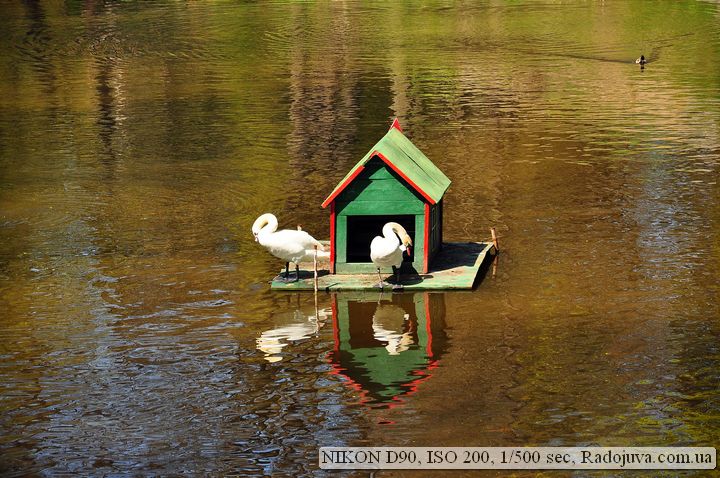
Sample photo on Nikon D90
9. Rechargeable Li-ion Battery EN-EL3e
Great armor-piercing battery. Also suitable for D700, D200, D300(s) etc. Withstands flash without over 2000 frames. The instructions say that it can provide work for 1200 shots, a third made with the flash - somewhere it is. The number of shots is greatly affected by the type of lens (e.g. VR mode), delay modes of the main display, etc.
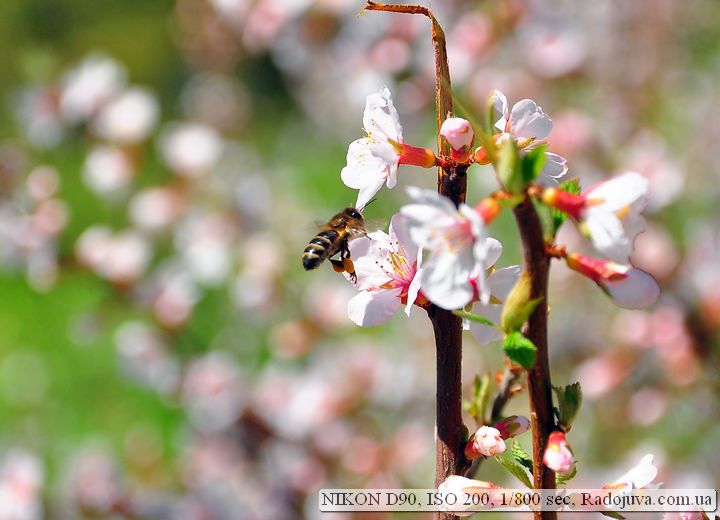
Sample photo on Nikon D90
10. Matrix cleaning system
A very useful thing. I recommend setting the cleaning when you turn off the camera, because when you turn it on, you often need to take pictures right away, and when you turn it off, let it clean for yourself. I advise you about cleaning the matrix read here.
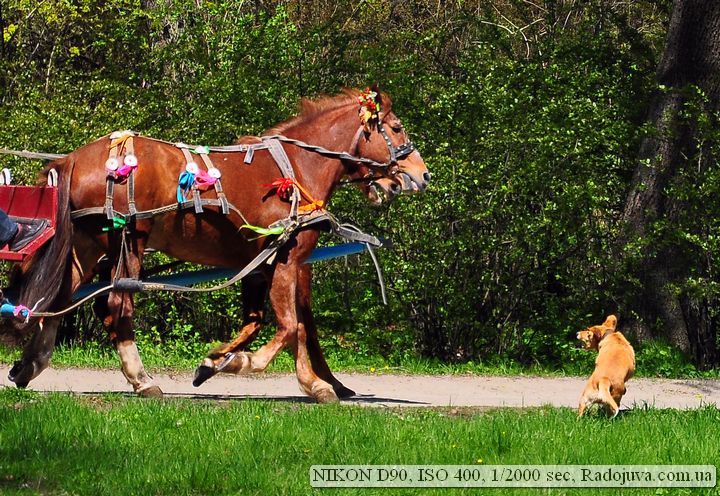
Sample photo on Nikon D90
11. Bracketing exposure
Bracketing allows you to shoot without fear for the correct exposure. True, this requires additional time, battery wear and fast filling of the memory card. It is under bracketing 4.5 frames per second are useful. I recommend not much use bracketing, it’s better to adjust the camera (especially the amendment exposure) and make one frame in RAW, and then, if anything, hold it out programmatically rather than slam the shutter on expo.
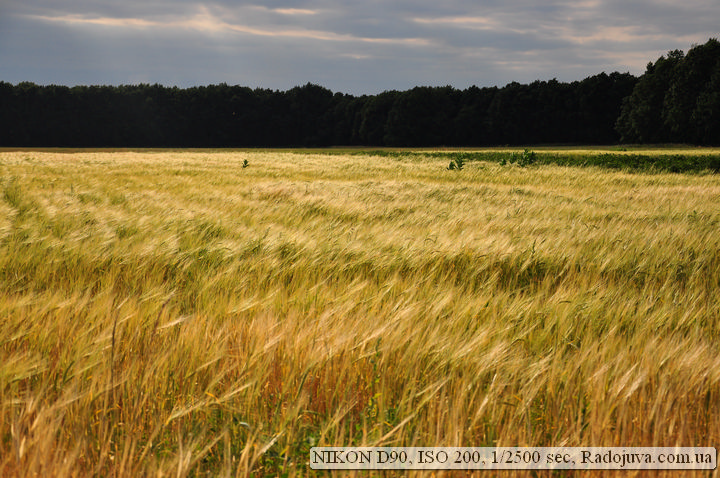
Nature photo on Nikon D90
I would like to note a number of huge advantages: wA wide range of functions to improve the picture - noise reduction functions, D-lighting etc.
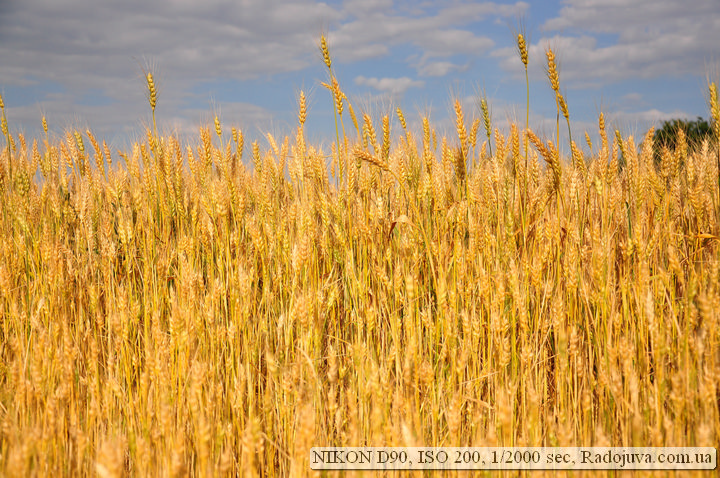
Nikon D90 photo
The disadvantages of the Nikon D90:
The strongest minus when working with the camera, I consider a strong return of the shutdown lever - that is, when you turn on the backlight of the additional screen, the lever moves back to the “ON” position, but its inertia is very strong and it goes further and turns off the camera (to the “OFF” position), therefore, you need to smoothly remove your finger after turning on the backlight of the additional screen. Very unpleasant stories are associated with this glitch, when at night, at important moments, the camera simply went out after setting the settings on the external display. Also, this switch is pretty loose, but it still works stably.
Also, after active work for a year, the rubber band, which is located to the right of the display, fell off, it expanded slightly and peeled off. I noticed that the rubber band covers the activity indicator of the memory card, that is, there is a fear of pushing the indicator deep into the camera and damaging it. The disease was treated by cutting off excess rubber and superglue. D90 got this disease from D200 and from D80. But, of course, I use my D90 camera a lot.
Exposure in 1/4000 second - if you haven’t understood yet, then when shooting with fast lenses starting with aperture of F / 1.8 and lower, you will miss the shutter speed, even at the lowest ISO.
Metering (exposure meter) does not work with non-chip lenses. It would be nothing, but this is just the camera and inferior to professional ones, such as D200 and older, almost any lens can be attached to them and the camera will operate in semi-automatic aperture priority mode or in good old manual mode. This really limits the operation of the camera with completely manual (without processor contacts) lenses, for example, Soviet ones - and you have to completely set all the settings “by eye”. Personally, I would very much like this function, since I am a fan of photographing with Soviet (and post-Soviet) optics.
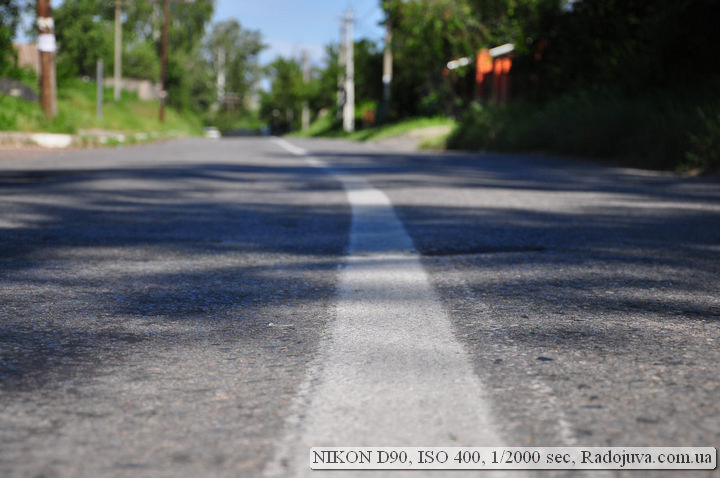
Photo on Nikon D90
For 3d tracking focus, there are not enough points (focus areas), and indeed, not enough focus points for such a solid camera.
No one wants depth of field view button imaged space. I use it very rarely, for example, in macro photography, but usually in 99% it is not needed. A funny thing that I advise you to check is to raise the flash and press the depth of field button (it’s located below, under the lens mount) and you will see that for a couple of seconds the flash works as a flashlight (using the strobe effect)
I consider one more unnecessary button \ property focus point lock button. It was useful to me only a couple of times, when I very strongly brought the camera to my face and accidentally pressed the joystick, thereby changing the focus point, in other cases, the point retains its position. It would be better instead of it to set the lever for changing the metering (as in older models), and so you have to press the top button near the external display and turn one of the selectors.
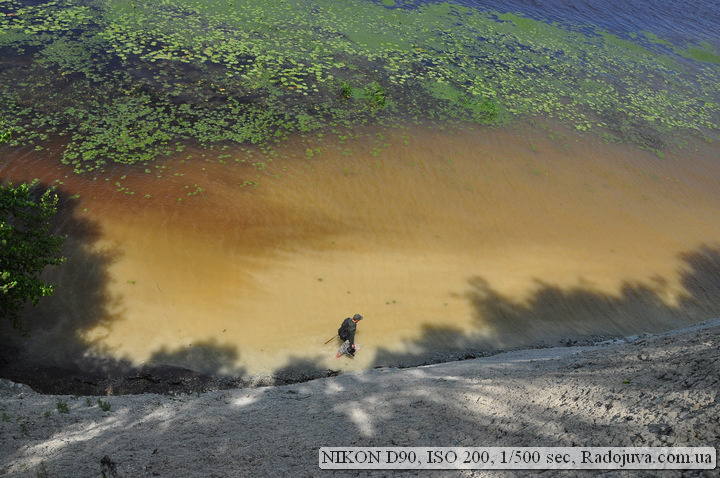
Photo at Nikon D90
Brief comparison with Nikon D80:
D90 is a descendant Nikon D80, which has an increased rate of fire, a different type of sensor (CMOS VS CCD), a central multi selector button is added, there is a Live View function and the ability to record video, and the display is also enlarged. Battery, menu navigation, ergonomics and other important functions remained the same. If you Nikon D80 I do not recommend upgrading the Nikon D90, as the main functions of the cameras are the same.
A brief comparison of Nikon 90 with D300, D300s:
D300, D300s Are professional cameras from Nikon, and the amateur D90 cannot compete with them. IN D300, D300s stronger body excerpt up to 1/8000, a professional camera control interface, high rate of fire and the ability to work with manual lenses, this is where the main differences end. I do not recommend overpaying for D300, D300s unless you have to shoot 1000 frames every day.
A brief comparison of Nikon 90 with D7000:
D7000 surpasses even the Nikon D300 in a number of parameters, D300s, and especially Nikon D90, because as an upgrade I recommend only Nikon D7000 or already ff Nikon D700, D600, D800.
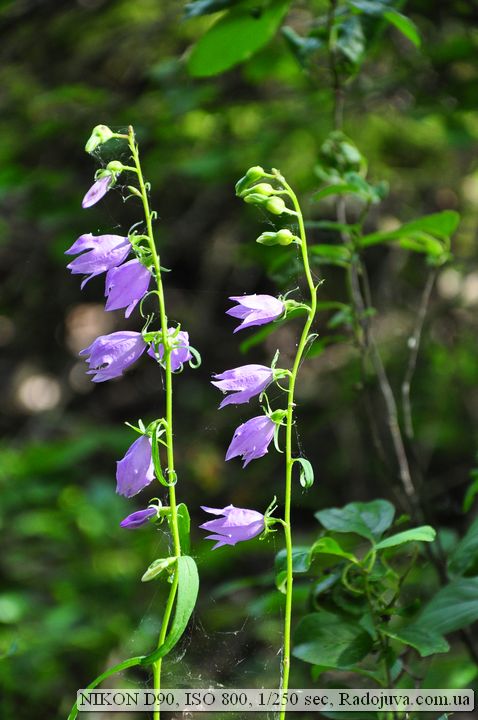
Photo at Nikon D90
Fit in the Nikon D90 Camera I think control with infrared remote Nikon ML-L3It costs a penny, and gives a lot of opportunities.
Attention: The final result of the image in the photograph depends very much on a large number of factors and the camera does not play the first role in this quantity, therefore, when photographing, remember - important how to take pictures, and don't try hard to find the best camera.
Sample Photos
The photos in the gallery below were shot on a budget lens Yongnuo 35mm f / 2 (model YN35mm F2N for Nikon cameras) and shown without treatment. Part of the photos is the conversion of the source RAW files by the original Nikon ViewNX-i utility without any additional adjustments, the other part is the original on-camera JPEG.
Download source files in format JPEG can at this link (114 files in the '.JPG' format, 735 MB).
More examples of photos, as well as source files, can be found in the reviews:
- YONGNUO LENS YN50mm F1.4N E
- Nikon DX AF-S Nikkor 18-55mm 1: 3.5-5.6GII ED SWM Aspherical
- Nikon N AF-S Nikkor 58mm 1: 1.4G Nano Crystal Coat SWM Aspherical
- YONGNUO 50mm 1: 1.8 (YN50mm F1.8N)
- Tokina VCM-S AT-X PRO SD 70-200 F4 (IF) FX N / AIS
- Nikon AF Nikkor 28mm 1: 2.8 (MKI)
- Tokina AT-X 80-400mm 1: 4.5-5.6 (AT-X 840 AF-II)
- Nikon AF Nikkor 20mm 1: 2.8D
- Tamron PZD Di 28-300mm F / 3.5-6.3 Piezo Drive VC Model A010
- Nikon Zoom-NIKKOR 80-200mm 1: 4.5 (AI, MKII)
- SIGMA ZOOM 28-105mm D 1: 2.8-4 DG
- Nikon AF Nikkor 28-70mm 1: 3.5-4.5 (MKI)
- Sigma 135-400mm 1: 4.5-5.6 D APO
- Tokina SD 24-70 F2.8 (IF) FX AT-X PRO Aspherical
- Nikon AF Micro Nikkor 105mm 1: 2.8 (MKI)
- Tamron 16-300mm F / 3.5-6.3 Di II PZD VC Model B016
- Tokina 107 Fisheye 10-17mm F3.5-4.5 DX AT-X Internal Focus
- INDUSTRAR 22U-1 1: 3,5 F = 50mm P
- LOMO RO501-1 F = 100 1: 2
- Nikon ED AF Nikkor 80-200mm 1: 2.8 (MKI)
- LOMO RO500-1 F = 90 1: 2
- Tokina AT-X PRO AF 28-70mm 1: 2.6-2.8 (Tokina AT-X 270 AF PRO)
- Nikon Lens Series E Zoom 75-150mm 1: 3.5 (MKII)
- Sigma DC 17-70mm 1: 2.8-4.5 MACRO HSM
- Tokina AT-X PRO SD 11-20 F2.8 (IF) DX ASPHERICAL
- SIGMA ZOOM 55-200mm 1: 4-5.6 DC HSM
- TAIR-3 4,5 / 300A
- Nikon DX AF-S Nikkor 55-200mm 1: 4-5.6GII ED VR II
- QUANTARAY TECH-10 NF AF MULTI-COATED 1: 4-5.6 f = 75-300mm
- Nikon NIKKOR-SC Auto 1: 1.2 f = 55mm
- Sigma DC 18-50mm 1: 2.8 EX MACRO HSM
- Tamron AF Aspherical 28-80mm 1: 3.5-5.6 177D
- Quantaray 70-300mm 1: 4-5.6 D LDO MACRO for Nikon AF, MACRO (200-300)
- SIGMA ZOOM 28-200mmD 1: 3.8-5.6 UC Aspherical
- Quantaray 70-300mm 1: 4-5.6 D LDO MACRO for Nikon AF
- MC PANCOLAR 1,8 / 50 CARL ZEISS JENA DDR
- YONGNUO 40mm 1: 2.8 (YN40mm F2.8N)
- Sigma 70-300mm D 1: 4-5.6 APO DG
- TOKINA AF 70-210 1: 4-5.6
- Sigma 70-300mm 1: 4-5.6 D DL MACRO SUPER
- Quantaray for Nikon AF 28-300mm 1: 3.5-6.3 LDO Multi-Coated (28-300mmD Ashperical IF)
- SIGMA ZOOM 28-300mm 1: 3.5-6.3 DG MACRO
- YONGNUO LENS YN 14mm F 2.8 N
- Tamron AF Tele-Macro 70-210mm 1: 4-5.6 158DN
- I-26m-U 2,8 / 52
- Sigma Zoom DC 18-200mm 1: 3.5-6.3 II HSM OS
- Yongnuo YN 85mm F1.8N
- INDUSTRAR 22U-1 1: 3,5 F = 50mm P
- SIGMA ZOOM 18-50mm 1: 2.8 EX DC (D)
- Nikon IX-NIKKOR 60-180mm 1: 4-5.6
- YONGNUO LENS 100mm 1: 2 (YN100mm F2N, for Nikon)
- PROMASTER DIGITAL XR EDO AF Aspherical LD (IF) 18-200mm 1: 3.5-6.3 Macro
- Tamron Di II SP 17-50mm F / 2.8 VC
- MC HELIOS-44M-4 58mm 1: 2
- YONGNUO 35mm 1: 2 (YN35mm F2N)
- Sigma DC 17-70mm 1: 2.8-4.5
- Nikon ED AF-S Nikkor 300mm 1: 4D IF Silent Wave Motor
- Yongnuo YN60mm F2NE MF MACRO
Prices for modern Nikon cameras in popular stores can look at this link.
Video review, retrospective
Comments on this post do not require registration. Anyone can leave a comment. Many different photographic equipment can be found on AliExpress.
Conclusions:
In general, the Nikon D90 camera is simply lovely, a wide range of functions will allow both professional and amateur to work. The speed of work and the quality of the picture are very pleasing.
Material prepared Arkady Shapoval. Training/Consultations | Youtube | Facebook | Instagram | Twitter | Telegram





































Good evening, Arkady! I would like to clarify one point. Are D90 and D300s matrices comparable in noise? As I understand it, both cameras relate to approximately the same time of publication. Thanks!
Yes, they are very similar in noise. D90 a little noise is a little less. In fact, the d300s and d90 have the same sensor.
Thank you very much for the answer! And what about the D7000? How much does a “small pixel” affect the matrix noise if you compare these two generations - D90 and D7000? I ask myself this question, since I have a D90, I like the camera, but I am interested in photographing birds, where there are problems with a lack of light, and I cannot pull over 400 without compromising the quality of the image. I don't want to switch to FX. So I think, does it make sense to upgrade the camera to the 7000th version, will the gain in sensor sensitivity or thoughts be in vain?
Yes, there will be a win, the d7000 makes less noise. But a significant improvement already with the d7500 or with a full frame
Thank you Arkady! Multi-pixel cameras are confused not so much with the heavy weight of images, but with the doubt that their matrices will not allow my optics (I shoot on Sigma 100-300 f / 4 EX DG HSM in conjunction with Sigma 1.4x converter, in addition, there is Tokina 11 -16 / 2.8, Nikkor 28-105, bought, by the way, thanks to reading your material, for which special thanks!). And the crop camera is happy, thanks to which I get 630 mm on the sigma at the long end with a converter, which is a lot.
In this case, I will not rush, maybe the megapixel race will someday stop and the company will give out something acceptable for my interests)).
Thank you for your work! Interesting reviews for the joy of us lovers!
Rather, on the contrary - you are afraid that the existing lenses will not pull the small-pixel matrix, will not be able to resolve it.
That's right))) put it wrong
There are test tables to determine the resolution of the lenses in the lines. They consist of different sections with groups of lines of different thicknesses and filling densities.
We remove the table and ... through a 20x magnifying glass we examine the negative, determining to what extent these lines are distinguishable. At least that's how it is written in all methods.
So, the technique is not suitable for digital devices, because we rest on pixels, which are larger in size than the pairs of lines in the table in the group corresponding to the resolution of even 20 ,,, 25 lines. Test on D610 (24MP)
Therefore, even the most budget lenses to implement their resolution in the lines will require matrices of at least 100 megapixels. And it will not be soon. And there is no special need.
Conclusion (IMHO): any budget lens is superior in resolution to any existing digital matrix.
For a working ISO - see the DxoMark website. For FF, ISO2900-3000 is a good indicator. All Nikon FFs provide this. Canon has only 5D Mark IV.
On the D80 I never shot on ISOs above 200. 400 was already enraged because of the noise.
On the D610 I can use 3200.
Pixels are just smaller in size. For the FF 24 megapixels, this is about 90 lines / mm - the interpolation is still about a third. As a result, 60 lines / mm
Compared D7000 and D5000 (same matrix as on D90)
The D7000 makes less noise, about half a foot from the force, so it's not a panacea.
Thanks! I agree with you, really, not a panacea
What about the D7000's dynamic range, which is noticeably higher than the D90?
Raw files from the D7000 stretch noticeably better than from the D90.
Especially if you need to pull something out of the shadows.
Besides, the D90's AF makes it work only through one point.
And there is no shutter speed of 1/8000, which is useful if you shoot with a high-aperture fix with an open hole on a sunny day.
And the D7000 focuses through the LV noticeably faster, the D90 often dulls when shooting through the LV.
And these are not all the advantages.
The difference between D7000 and D90 is big, which cannot be said about the difference between D7000 and D7100, there is not such a big difference.
But changing the D90 to the D7000 is definitely worth it, especially since the D7000 is now generally inexpensive.
the d7000 has a working ISO about half a stop higher than the D90; the D7100 has another half stop. On the D7100 I try not to use Iso above 2500.
Regarding the small pixel (on the D7100): with 18-105, 18-140, 70-300G lenses you can get very close to per-pixel sharpness, with fixes (I actively used Nikkor 50 / 1.4, Yongnuo 35/2, Yu-37p) - and even more so. I didn't feel any problems with a 16MP crop matrix. However, do not forget about the micro-lubrication problem, with 24 megapixels it is easy to get micro-lubrication without stabilization: the shutter speed recommended by me - around 1 / (2 * FR) - from personal experience I got blurry pictures at 140 mm and 1/160.
Thanks a lot! The fact of the matter is that this micro-lubrication confuses me on multi-pixel cameras, my optics are unstabilized (a wide-angle lens does not count). And I do not need 24 megapixels at all (do not print posters!).
The D7100 camera seemed interesting in that you can additionally crop the matrix up to 1.3x if you shoot with a telephoto lens.
T.O. I leave myself my own D90 and do not bother)). I looked at the D300s at one time, but now I don’t see the point in it for my needs.
more pixels - more possibilities to crop :-)
× 1.3 I also sometimes use it when the zoom is not enough, it remains on the order of 12 megapixels): you can, of course, crop it later, but it's overweight. And the rate of fire is added and the buffer is increased.
My opinion is that it is worth switching from d90 to D7100, you do not lose anything (from what the D90 can do), you get extra. buns (AF, ISO, resolution, control) and better color.
Thank you!)) I will think about what you said. More, of course, interested in the ISO problem and the possibility of this camera (D7100) "features" x1.3. The color, I think, will not be very different, on the other hand, there is always an opportunity to correct something in the editors, filters.
Good afternoon! Is it worth it to switch from Nikon D70 to Nikon D90?
Yes, in general, the transition is fully justified
And if you choose between the Nikon D90 and D200? On the "secondary", they are about the same.
It all depends on the tasks, goals and experience. In general, the D90 will be better. But there are special cases.
D300s will be better.
I just read you that Nikon D200 allows you to shoot with Helios and the like, not only in manual mode. And I have just Helios. On the other hand, in the D70 I shoot in manual mode, but ... From three shots in focus, one is obtained - as I understand it, the green signal, although it shows that the object is in focus, in fact is not. I shoot three shots at a glance with a difference of about half a meter, but this is not very convenient: you waste time and since the D70 has a very small screen, you can only see how the shot turned out at home on your computer. True, I suspect that it can always be out of focus when using helios. Would like to know your experience?
not wishing to provoke holy wars, I will say that for manual optics, kenon is much more convenient.
All right
(The green signal, although it shows that the object is in focus) - Each lens (Helios) comes into focus if you turn it clockwise or counterclockwise to a green signal. You just need to experiment, record and look at the computer monitor and choose the right option.
did I understand that it is not worth worrying that in Nikon D70 or D90 it is possible to shoot with “helios” only in manual mode? In those Nikons, where you can shoot manuals in Auto modes, there will be no more sense, will it not help?
the fundamental problem of junior Nikons when shooting with manual optics without a chip is the inability to use the camera's exposure meter. therefore, the camera mode is only M, and the exposure will have to either be selected by eye, according to the histogram, or use something external. in older nikons everything is different, there is an opportunity to select non cpu lense in the menu, specify the glass parameters, after which the exposure metering will work. the chip on the lens is not needed.
“There is an opportunity to choose non cpu lense in the menu” - you don’t need to choose anything, you just hook the manual glass and shoot, the camera always measures the light with all lenses and without a lens too.
On older cameras, only "A" mode will be added. There is not much sense in it, you still have to make corrections often, and you need to focus with your hands, and this is the main inconvenience. So, because of one automatic mode, it is definitely not worth changing the d70. But due to the larger number of pixels or higher sensitivity, it is. If we compare d90 and d200, then the first has lower noises at high ISO (ISO 800 is fully operational, and even at 1600 you can shoot if there are no high requirements for the picture). U d200 max. working ISO is one stop lower, but on its side there is a more beautiful color.
Hello, tell me if it’s worth switching to this camera with the d3000?
Generally yes
Of course worth
You'll see the difference right away
I switched from d3100 to d7000
Taking in my hands the d3100 is now for me a toy uncomfortable in the hand, the viewfinder is not pentaprism, dark, autofocus shit
In general, take it, you will not regret it
Writes: "The quality of the pictures is very dependent on the lens"
Here, just below: "Always remember that it is important how to photograph, not by what means"
You already somehow oprelitsya one way. Probably more true, this is a tandem of one with the other, and everywhere trending hand in hand, this is cheap PR
Does one interfere with the other, or do you disagree with this?
There is photo quality and there is image quality. The quality of photography depends on the skills of the photographer - the plot, correct exposure, framing. And the quality of the image depends on the equipment (camera and lens) and is able to decorate a good photo, but it certainly does not pull out a mediocre one. Basically, no matter how much noise your camera makes or how sharp the corners of your lens are, it's all over the place if you're shooting shit.
Good day. If you compare the d90 in the picture with the d3300, which is better? Other parameters are not of interest.
Generally D3300
So I think so too. I would like to join the d40 with another legend, but we need to take a modern amateur one.
Thanks for the opinion!
D2Xs is beautiful in the picture, if we remember the old people.
In the picture, my first-fame is beautiful. But I'm kakbe about something else.
Paaaazvolte :) If you remember Kenon, then a better picture than single ones and not to find)), coupled with excellent AF and reliability.
Hello, dear amateur photographers.
I ask for advice: I have Nikoshka D 90. I want to buy this lens with him.
Nikon 18-105mm f / 3.5-5.6G AF-S ED DX VR Nikkor
Maybe someone has already tried such a combination, tell me how acceptable this union is? Or should you pay attention to other optics?
This combination can be called universal and classic for any Nikon crop. I think it will be more difficult to find someone who has not tried it yet) For everyday, not difficult tasks - quite a good budget union. For a regular zoom, it is good. For more serious tasks in terms of photo quality, you need to look towards fixes.
Thank you!
Is there anything to advise more specifically?
What advice do you need? The lens you specified came as a kit for the camera you specified. This was the most common kit. Earlier, the commentator answered you about the same. You can read the review for this lens, it is on this site.
I bought the carcass separately. About the fact that such a lens came in the kit, I know, I just had no experience of shooting with it.
The council asked to inquire about an alternative in favor of better quality, but at an acceptably reasonable price point.
Lenses similar to 18-105, but slightly more expensive, these are 18-140 and 18-200. The best choice is the 17-55 / 2.8, but it's not cheap.
Thank you, Ivan!
As an inexpensive, everyday fixer with a high-quality, sharp picture, I definitely recommend 35 1,8G. This is generally a must have for a crop! For portraits - 85mm. This is if you need not versatility and zoom, but quality and sharpness. In any case, fixes always give a better picture than zooms.
And Ivan, above, correctly suggested which zooms are better. Hope it helped?)
Yes of course ! Highly ! Recently, a review came across one on YouTube, on this topic. They also talked about such lenses. Well, I will look for a used one, at a reasonable price….
Good afternoon! Can you please tell me if it makes sense now in 2020 to take the D90 as a replacement for my D3000? The budget is limited, and the D90 is offered for a very “tasty” price, but is there any point in taking an old camera, I don't know ... !?
If a friend suggests, take some test shots.
The mileage of the D90 is not clear.
Well, now there are also a lot of fresher D7000s at flea markets, which are also very inexpensive (and 8 years ago the price was from $ 1000 for it).
Anton, the question is too superficial .. for what purposes do you need to change the camera? What does not suit the same d3000? What do you expect from the exchange? And so, D90 is still very good for a more advanced acquaintance with photography. It is unlikely to give you any increase in picture quality, but in ergonomics, control and training to work with non-automatic modes, it is an excellent and inexpensive option. The review perfectly describes all its advantages. Decide for yourself whether they are needed in your case.
Perhaps the most unpleasant moment in the d90 is the lack of adjustment of the back or front focus of the lens in the camera, and since the quality of the lenses is different, this function becomes very important when buying a camera.
Good afternoon everyone. I bought the d90 from my hands, the camera is excellent, I am very pleased, but there is a question. When shooting on the display, the image is "cold" as under a fluorescent lamp. but the photograph turns out to be a “correct” image in those colors that you see with the eye, or in those proportions that the matrix can transmit. actually the question itself: is it a display error? which of the image viewing settings or is this a problem with this model? this effect is especially pronounced in “gray” weather. because of which it is sometimes difficult to understand what is missing for the “correct” shot. I hope someone will tell you.
this is a feature of LCD color reproduction inherent in almost all nikon cameras, on the kenon, on the contrary, almost all LCD cameras show a slightly warmer picture. if you really don't like this, you can ask the SC to correct the WB LCD, or, if your hands grow from the right place, download the service program and do it yourself :)
thanks for the explanation, hands on the locksmith's part =), on "cybernetics" so-so. What is the name of the program? because there is no service center in our city 1000%.
the name will not say anything, an archive with software for a number of old nikon cameras is walking around the network. I can give you a link to it if Arkady permits. well, I do not give any comments on the use of such software))
if possible, give a link to the archive in a personal, so as not to be an advertiser on the forum. and don't break the rules.
where to PHYSICALLY send the link?
https://cloud.mail.ru/public/df0c8583d5d7/Nikon_Programs.rar
Password: videomax.ru
Canon 5D II is cold, so I don't look at the BB at all. Can I correct it on it? I would raise it a little.
More precisely, omitted :)
you can, in the service. it is a common job to color-match the LCD of different cameras of the same client. but you can just wind up the color as you like.
As such, there is no rear display white balance setting in the service program. Here are the settings in this program:
I wrote about BB in order to make it easier for an ordinary user to understand.
Well, they call it hue, but in fact it is a white point setting.
Thanks for the tips Ivan and Alexey, I downloaded the program and I will try it.
1. disable antivirus. 2. disconnect the computer from the Internet.
and then run the software. and remember to save all data BEFORE trying to change anything.
Have you had any experience shooting sports with this camera? Your opinion? Thanks.
I got the D90 already in 2021 with 20 thousand mileage with 18-105 lens for 8500 Russian rubles, ideally with a box, documents and a receipt!
Before her there were D3100, D800, D300 and now D90.
I also bought an external flash Nissin Di466.
The camera is just a bomb, as they say, PERSIK !! Super! Shoots better than D3100, D300.
D800 is expensive optics and a camera, files are heavy - minus for me.
Ergonomics is not inferior! I'm happy. I chose between D5100, D3200 and D90, and I do not regret choosing the D90.
I tried 35, 50, 85 from fixes. I bought everything new. I came to the conclusion that flash is more important than high-aperture optics. As a result, there was only one 18-105. I like him very much.
Filmed at night in the park on ISO 1000. There is no noise at all. Raise higher? What for? shoot in the dark? So there and the eye sees nothing! If there is no light, nothing will save you except a flash.
To shoot under the light of yellow lanterns on high-aperture optics and high ISO is the lot of amateurs.
Thanks to the reviewer. I have been reading the blog for a long time. Probably read everything that is possible on this site. But your experience is more valuable. Don't be afraid to experiment, try new things and look for the best for yourself. Good luck to all.
Eka worn you.
*
“To shoot under the light of yellow lanterns on high-aperture optics and high ISO is the lot of amateurs.”
So yesterday I was just amateurishly filming evening Moscow on a Kodak Portra 800, and with my hands.
It's even interesting what happened in the end ... :-)
“But your experience is more valuable. Don't be afraid to experiment, try new things and look for the best for yourself. ”
Totally agree!
Good luck to you too!
PS> I also had D90 and left a generally positive impression.
Dmitry, January 27 Fujik plans to present two cameras, three lenses and a new type of film (!):
Fujifilm GFX100S
Fujinon GF 80mm F1. 7
Fujifilm X-E4
Fujinon XF 27mm F2. 8 Mark II
Fujinon XF 70-300mm F4-5.6
A new type of film.
Ken here recently noticed that Fuji Velvia 50 from $ 4 for 36 frames raised the price to $ 18.
As for the D90, I still use this camera with pleasure.
Thank you, I have to look.
PS>
"Fuji Velvia 50 raised the price to $ 4 from $ 36 for 18 frames."
Velvia, Proviya, alas, have never been cheap, as well as Kodak Ektahrom.
I'm talking about a trend. Not only is the film constantly getting more expensive, but now it is dramatically, at times!
I haven't noticed this yet, and in addition to photographic film, you can buy film - it's cheaper.
18-105 is a versatile lens. This is where its advantages end.
If you think high ISOs are unnecessary, then you've never filmed indoor sports :)
The flash is a necessary and sometimes irreplaceable device, but it does not solve 100% of problems in low light.
The D90 is a good device, but in 2020 I would take something newer - 7100/7200/7500, if from the crops.
"Ergonomics is not inferior!" - well, you bent it!)) It is inferior and how. After d300, it seems to me like a toy.
Flash! Exactly! And I, like an amateur, shoot stars with a raised iso ... And the birds fly so fast and high that the shortest shutter speed is not enough so as not to blur, but you can turn on a flash on a sunny day))
A flash on a sunny day helps out the shadows when shooting portraits. If there is no reflector or a huge transmission diffuser, for example.
Is it really so noticeable that the D90 shoots better than the D300, despite the fact that they have almost the same matrix? Yes, the D90 is more of a hobbyist camera, so it has some niceties, but like the D80, there is a problem with the ill-fated plastic gear. the problem is growing with age, just as if you shoot in RAW, then in general there is no need to talk about the difference in the pictures. In my opinion, the main thing in the photo, without belittling the importance of the device (although the D90 is an amateur copy of the D300), is the optics and the skill of the photographer.
If you shoot a lot, then the difference with the d300 is noticeable, especially on the ISO above 1000. My d90 has 400.000+ mileage on one shutter and gear. With reliability - how lucky. But if you shoot a little and at low ISO, then the pictures from them are very similar and I will never be able to distinguish them and for any money.
d90 is now being repaired, the gear flew. In the internet they write this is a disease of these cameras, an indirect confirmation of the fact that these gears are everywhere. I guess the problem is not with the motor, but with the lens. I used it with 50 1 / 1.8d and after giving the camera for repair I tried to twist a screwdriver - the lens sticks, i.e. at the beginning of the rotation there will be a pretty strong blow to the mechanics of the screwdriver. Tomorrow I'll go to the SC, I'll talk to the master.
This gear (the same as for the D80) has nothing to do with the “screwdriver” drive. It stands on the motor, which controls the mirror lifting mechanism, the diaphragm drive and the shutter. A longitudinal crack appears in it. This is most likely due to its tiny size.
this is due to the quality of the plastic itself. over time, it just collapses. and the plastic one was made on purpose - in the case of a “wedge” of mechanics, it breaks down, and not all the mechanics and not the motor. in professional cameras, there are no longer plastic gears in highly loaded places of mechanics. let's say the mechanism for cocking the shutter of cameras D2, D3 is definitely a shidèvre)) like all other mechanics.
As for the material, of course. But in my opinion, no plastic can withstand such a thin wall thickness. Still, I wonder why Nikon has this problem only on one mechanism, which is used on two models, and on the others, neither the plastic is destroyed, nor the mechanics go crazy ...
In general, I read a lot of the Internet) Replaced the motor itself. The gears are intact. They said that such as I fantasized happens in the Kenons. It doesn't happen in Nikons. And my motor broke, as the master explained to me, due to the fact that the device had been lying on the shelf for a long time. This D90 loves to be walked from time to time and then it will show a great resource.
For the first time in my life I hear that if the electric motor is not turned on for a long time, it breaks down. Your master is a dreamer himself, or is kidding.
bradus vulgaris, what else can I say))
and by the way, which of the two motors was replaced?
Most likely the one that scrolls the film.
Here is a photo of the motor. I have no reason not to trust this SC and this master.
this is the diaphragm actuator. AF wedge has nothing to do with it.
and from inaction, like any other motor, it cannot fail. the master just wanted more money.
The master wanted to show his importance and he succeeded.
The master argued nonsense, Canon did not hear about any massive problems, only the 17-85 lens was unsuccessful. But the reliability of Nikons is greatly embellished, and the fact that someone has 90 thousand d400s, and someone has 50, indicates that the quality of spare parts is different, they shoved good ones into one batch, saved them into the second. And yes, Nikon only makes top-end carcasses in Japan, Canon starts with three-digit ones (except for the new 100d and beyond). Even the first EOS m bzk was made in Japan, and I have a Japanese soap dish Xus 80, I took a used one, and only I have had it for 10+ years. What hasn't been experienced. And if you compare one class of carcasses, even tactilely, Canon is perceived as better and more reliable, and the fact that younger carcasses are made of polycarbonate or fiberglass on a steel frame says a lot, Nikon never dreamed of such a thing.
Yes, Nikon still cannot put normal rubber on the handles, which you can talk about)
canon battle seen from afar)
It’s better to be a canon boy than a brainwashed Nikon sectarian)
Yeah, the rubber bands are bad, the color is bad, the color is bad, the lenses are bad, everything is bad and everyone will die))
that is, does the built-in flash replace the synchronizer? And in FP mode, can you fire it from a slave flash?
Yes Yes
Arkady, good health to you!
Now many people sell Nikon D90 and based on your article indicate that the camera has a magnesium body.
I dug it all over and, no, I didn't find anything like it. There is not a single gram of magnesium in this cell.
Chassis - aluminum, plastic body.
https://camspex.com/ru.comparison.php?camera1=Nikon+D300&camera2=Nikon+D90
https://nikontalk.ru/photo/slr/%D0%BD%D0%B0%D1%81%D0%BA%D0%BE%D0%BB%D1%8C%D0%BA%D0%BE-nikon-d90-%D0%BC%D0%B5%D1%82%D0%B0%D0%BB%D0%BB%D0%B8%D1%87%D0%B5%D1%81%D0%BA%D0%B8%D0%B9-%D1%87%D1%82%D0%BE-%D0%B2-%D0%BD%D0%B5%D0%BC-%D0%B8%D0%B7-%D0%BC%D0%B5%D1%82%D0%B0%D0%BB%D0%BB%D0%B0.html
Either poke my nose into the truth, or correct your mistake.
Thank you.
Hello, please help. There is an option to purchase nikon D90. D3200. D3300 with 18-105 lens, the price is about the same, It is supposed to be used for personal purposes, i.e. shoot on vacation, travel. Mostly a photo, occasionally a video. What is better? And with this use, do you need a second lens? if so, which one is better, there is Galios-44M, though without fitting for nikon. Thank you
D90 is good because, unlike D3200, 3300, etc. you can use screwdriver optics at nm without losing autofocus. True, the video is not very good there. In general, 18-105 is sufficient for your purposes, whether you need another lens depends on what you want to shoot. Helios on Nikon will focus no further than 1,5 meters. If you need a manual fifty dollars, it is better to buy a Helios 81N \ Arsat with a Nikon bayonet.
Have experience of communication with Zenith TTL
Hello! Is it worth contacting, according to the owner, the mirror is jammed
Most likely, the gear that drives the mirror and shutter has broken. It's up to you to decide whether to get involved.
with straight arms, you can replace it yourself. only to disassemble \ unsolder a lot there.
On my cell, I changed it myself. But I would not buy someone else's with a malfunction. The secondary market is full of other offers.
Good evening! We need a treat.
In my Nikon d 90, I look at once to a new wide-angle lens, bazhano - light-sensitive.
Worthy of the Tokina AT-X PRO DX 14-20mm f/2.
Suggest, be kind, who can blame problems through those that Nikon d 90 is not new?
Tobto chi poyagne dans camera tsey lens?
Crazy.
With lenses from third-party vendors, you can be. You don't guess. Bazhano reverify a specific lens on a specific camera.
I recently bought a used D90, updated the firmware since the first version was installed and my sigma 50mm f1.4 was no longer visible to the camera.
Please tell me if there is a link to the old firmware? I searched until I found it. I hope rolling back the firmware will help.
Thank you all!
Hurry up.
Rollback should help
Should. If it were provided.
And so just look for the old version of the firmware, which Nikon basically does not upload, and on third-party sites it practically does not occur, at least you cannot see it on the d80.
*d90
Friends, I recently bought a d90 from my hands and noticed such a nuance: after the camera goes into sleep mode (screens go out, exposure metering stops), it does not wake up from pressing the shutter button and any other buttons. For the camera to work, you need to turn it off and on. There don't seem to be any other problems. Is this a malfunction? Or a feature? Reset settings did
Obviously a malfunction.